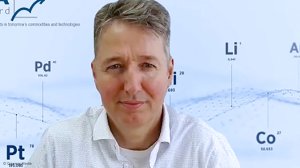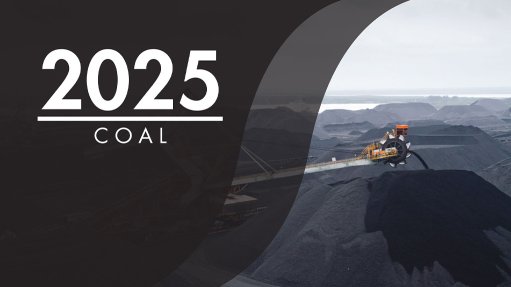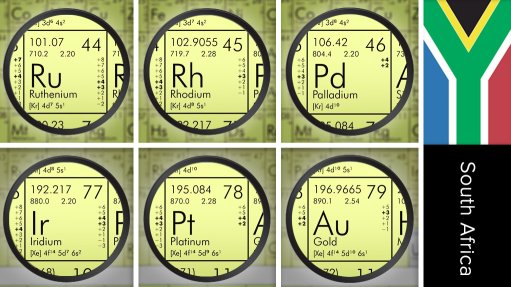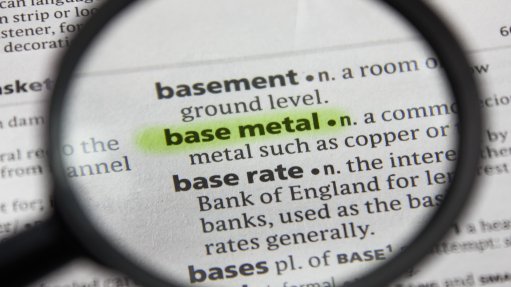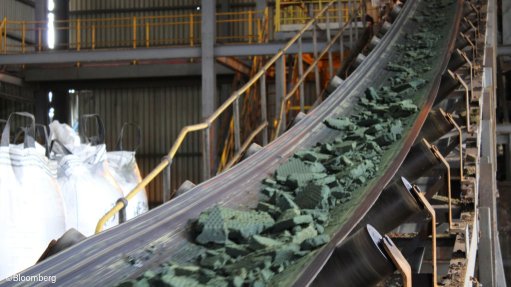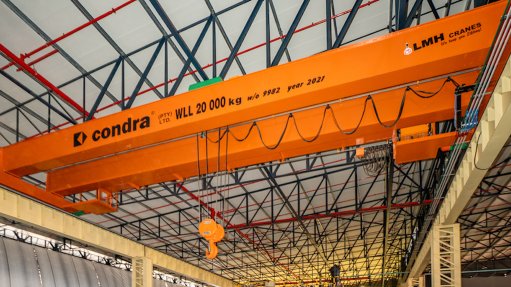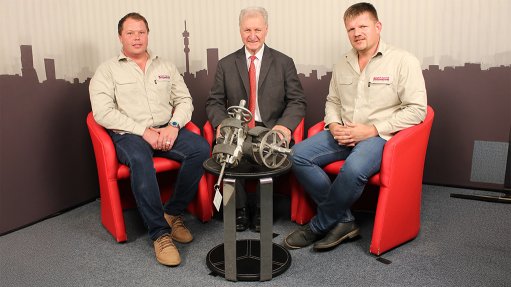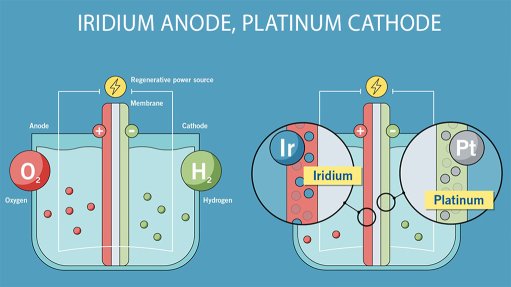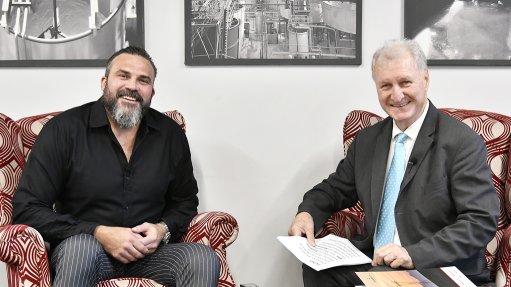Platinum attracting broad spectrum interest, SFA Oxford attendance the highest ever

Henk de Hoop interviewed by Mining Weekly's Martin Creamer. Video: Darlene Creamer.
JOHANNESBURG (miningweekly.com) – SFA Oxford Platinum Lectures 2025 attracted the broadest spectrum of platinum interest amid the highest attendance ever, with a similar top-notch turnout evident at the London Platinum Week that followed.
“We had good representation across the board,” upbeat SFA Oxford CEO Henk de Hoop told Mining Weekly in a Zoom interview. (Also watch attached Creamer Media video.
Moreover, the platinum jewellery component presentation in London had twice as many people as it did in 2024, with jewellers in China starting to restock platinum amid fading gold momentum.
That was among the themes coming through, too, from the presentations of the World Platinum Investment Council (WPIC) on the outlook for China.
“WPIC covered all the aspects in the Chinese market, also automotive, but particularly standing out is that WPIC is becoming quite optimistic that the jewellers are starting to restock platinum, with the biggest driver being the difference between gold and platinum pricing and the gold momentum is starting to fade a bit in China from a momentum of buying volume.
“It needs only a small proportion of that gold market to look at white gold and platinum particularly as an alternative to have a potentially large impact on the platinum market, which is much smaller than the gold market,” De Hoop noted.
Ostensibly resurging, too, in addition to jewellery demand, is China’s investment demand, which is poised to help the platinum market in particular.
Mining Weekly: How important is it that China’s platinum jewellery stores are now including platinum investment bars in their offerings?
De Hoop: It's a very important development, because there are excess savings in China. The property market is not providing the returns anymore. Gold markets provided great returns, and that's stalling now. What we do need is a bit of price momentum and platinum, and you can show them there's actually momentum building there, and there is a supply deficit, and the stocks are starting to deplete, it could become a very important story. The reason as well is that China is such a large savings market, there's only a tiny percentage of that money that needs to flow into investment bars for it to make a huge difference to the platinum market, so it is very exciting. It will hopefully suck up some platinum and hopefully move the platinum price upwards in that process as well.
Platinum supply is down even though demand is robust. Why is this supply/demand paradox continuing?
We had a CEO's panel, and remember a basket is being mined, and although the enthusiasm for platinum is increasing, and the deficits are there, the price hasn't moved realistically, except for last week, where it popped up by about $150. But the net impact of the collapse in the rhodium and palladium prices over the last two or three years is that there hasn't been much money going into the ground, and it hasn't been happening for a couple of years. The confidence in the longer term future is weak, partly because of the battery electric vehicle (BEV) penetration concerns that people have, and there are very few alternatives out there at the moment, in the sense that the fuel cell boom that people are hoping to come, is not as clear-cut as what one would need to have confidence to spend billions in the ground to expand the production. The lack of investment in the industry means that naturally in mining, you will start to fade a bit from a volume perspective. South Africa has a particular problem as well, in that a lot of the bulk of the production comes from very deep, old mines, and those are aging and replacing that production is particularly challenging because of the depth they're mining at. It just takes too long to sink deep shafts, so you will see a naturally declining profile. The other fear that there is as well is that recycling in the future will take some of that feed that the market needs off the hands of the primary producers, and that combination hasn't given the industry the confidence to consistently invest in production, to stay where they are, or even grow production. So, yes, production will decline, and that is kind of already baked in, because even if you want to turn that around, you would be too late to actually catch it by spending money right now.
The mining and marketing of platinum group metals (PGMs) is of the utmost importance to the economy of South Africa. What must be done, in your view, to promote PGMs to the hilt?
That's a very important question and it was part of the themes that came through as well at Oxford Platinum Lectures, is that should the industry not work together more in marketing the metal, finding the applications. We, at the moment, seemingly have a bit of a scatter-gun approach. We have the WPIC, we have the Platinum Guild International, we have the International Platinum Group Metals Association, we have the individual company programmes to stimulate demand and find new applications. One of the presentations we had was from Dwight Anderson from Ospraie, who has been following the industry for the last 30 years, and his message, essentially, was that the industry should work more with the fabricators again, after some of that relationship setting had been distanced over the last two, three decades. He also said, look, your efforts should actually consolidate, in a sense of all these different entities that you fund, shouldn't that be a joint programme? I think all the mining companies are now aware of their very large dependency on the automotive market, which was a great market to sell into for many years, because it kept on growing - legislation kept on tightening as concerns about air quality kept on increasing, and as that grew, there was no change on the horizon for that to be a concern, except when Tesla started to really get successful in selling BEVs and the Chinese jumped onto it - but it became a real threat to be so dependent on this one application, which is very extreme in palladium and rhodium. Palladium is 85% exposed to the car industry and rhodium 90% exposed to it, so if that changes fundamentally, you've got an issue to deal with. So, there's a lot of work being done on this, working with Heraeus, working with BASF, working with Umicore corps, working with Johnson Matthey. All of them are looking out for new applications. The difficulty is that takes time. If you do find a new application in a PGM usage, you have a 10-year development programme until you commercialise it and then the second problem is can you do that at scale? The beauty of the car industry is you sell 80-million to 90-million cars a year and they all need PGMs. Finding something similar that sells at such volumes is probably the tough bit. The hope is fuel cells. There is a risk to that because of subsidies that are being cut around the world. The Inflation Reduction Act in the US is being cut. The European Commission and/or the European Union has other expenditure priorities moving to the fore now. There's a lot more money to be spent on defence in the years ahead, so will there be sufficient money to actually help stimulate this, this hydrogen economy to scale up, and that needs to happen because it's a very important application for future demand for platinum in particular.
Virtually every day, reports are released on more green hydrogen projects going ahead and construction taking place on sites. To what extent do you expect green hydrogen to uplift the demand for PGMs?
You first have to often look at what technology they're using. If they use proton exchange membrane (PEM) electrolysers, yes, there will be PGM usage in that, so that's important because a lot of the projects at scale also use alternatives like alkaline electrolysers that don't necessarily use PGMs, although some versions are now PGM-enriched alkaline electrolytes. The real volume of PGM usage is in the application of a fuel cell. It's not necessarily on the electrolyser side. It's in the fuel cell, so when green hydrogen gets made, it doesn't mean that there is an end-consumer in the mobility sector ready to take that which will give you the real volume, because that's a car or a truck with a certain amount of platinum in it, times 100 000 or times 10 000 or times a million. That is what is giving you the real volume. That is where there are still a few question marks, because the distribution of hydrogen, then, is also important. A lot of these green hydrogen sites will probably produce ammonia initially, or will be producing hydrogen to go directly into an industrial site, which doesn't necessarily create extra PGM demand. It's important that you have a clear assessment of the PGM impact of a green hydrogen project. What is important, though, is that the more experience we get with it, the more likely it is that we will find hydrogen distribution to actually succeed, and that can lead to eventually pulling in the heavy duty trucking side as well, in committing to this technology. There’s a particular risk we are following as well, because the Chinese having been also very successful in battery electric cars are starting to push this quite hard in heavy duty as well, and then you have a competitor for fuel cells in heavy duty. It is not sure which one will succeed, because hydrogen developments in China are probably going the fastest anywhere in the world. They want to be a leader there as well, and it might well be that they are able to scale up hydrogen, trucking, manufacturing and distribution of hydrogen also successfully. But it will be a competition with an industry that is also producing batteries very cheaply, and is finding ways to get heavy duty trucks to work with batteries through swapping solutions, so it's a competing set of technologies, and that’s where the volume for platinum will be. The electrolyser side is interesting, but it's not necessarily where we're going to have a winning PGM end-demand strategy.
The world is consuming 100-million tons of non-green hydrogen a year, so-called grey hydrogen, which is “polluting like hell”, the French company Lhyfe has pointed out. So, 23% of the market is already there – and we know Sasol, which produces 2% of the world’s grey hydrogen. How important is the use of PGM-based PEM technology to replace the grey hydrogen with green hydrogen and to mitigate climate change?
It's a very important question. At the moment it has a lot to do with economics. You will find that getting the cost of green hydrogen down to a level that it can compete with grey hydrogen is almost impossible if you do not introduce something like carbon taxes, for example. If you have an economy globally that is, let's call it, choking because of what the US policies are currently causing – uncertainty in the world, tariffs imposed, tariffs on, tariffs off, in low growth environments - if you do not have that same ambition that you saw two years ago of decarbonising the world, and we can see that language everywhere, ESG targets are being pushed out and commitments are being weakened, you will find it very difficult to convince companies and consumers to pay up for what is more expensive hydrogen, because green hydrogen is, at the moment, still well more expensive. You can see the first signs as well at the Neom projects, where a large percentage of the ammonia they're going to produce from green hydrogen isn't placed because they cannot find buyers willing to pay twice the price for green ammonia compared with traditional hydrogen. It is not a big stick or a tax that actually forces you to choose between the two alternatives. Everybody's aware that it needs to happen, but nobody wants to pay for it at the moment, and that is where the dilemma is and you're absolutely right. This grey hydrogen is probably the easiest target for displacement by green hydrogen. That's what you should start with, because all the other components in the chain for other hydrogen users are still at an early stage. For example, making green steel. It's a challenge. It's been tested. It's being manufactured already, but the cost implications there are large, and the technical challenges are still important there as well. Green hydrogen displacement of grey hydrogen would be ideal if it wasn't for the economics at the moment still being very challenging.
Another 23% of the market is mobility and the zero-emission of a green hydrogen fuel cell electric vehicle, the FCEV, becomes part of a holistic solution rather than a piecemeal solution. BEV charging stations have been heavily subsidised whereas liquid organic hydrogen carrier, or LOHC, technology is there for the taking using existing infrastructure. How can we get governments to see the huge value of green hydrogen's holistic nature and the fact that existing infrastructure can be used with LOHC?
Again, a very important point. It meets heavy lobbying, lots of work, lots of support by the industry, like Anglo American has done by starting up AP Ventures and them pushing this along. I think we are trying to keep in mind as well, because we're trying to keep a bit of distance here, that you are competing with existing technologies with strong offerings. Yes, we can always focus on the weaknesses of the electricity revolution, but we have a mini-factory here in Oxford, and we had them speaking at last year's Oxford Platinum Lectures, and they are tracking how many users of electric minis are charging, and 85% charge at home. So, yes, it’s a challenge. The charging infrastructure subsidised; if you’re in the UK, charge at home, and you’re going to have an electricity tariff at night, which is a third of what you pay during the day. It is also a system-based approach, where integrating it in an electricity system, where optimising the load balancing through using electric vehicles, makes for a quite a good solution for the electricity companies as well, and they're selling more electricity on the back of it, so various systems are competing against each other. At the moment, because of the sheer scale of the BEV industry, they are running well ahead, and that's the reason why we have this gap, and it needs to be pushed very hard to find a niche in the overall system, because it's not going to be either/or - it's going to be a mix of systems, and we need to make sure there's space for a hydrogen-based system, that there's space for a hydrogen-based service industry, because it will be lost otherwise to eventually electrification, and it will then be a super niche, and it will be far more difficult if you do not have the scale to make that a commercial proposition for somebody that uses a truck. We shouldn't forget that none of the truckers are trucking for the environment. They're trucking for lowest cost of getting things from point A to B, and hydrogen needs to prove that it will be competitive on the long distance with the alternatives by that time that will be available, be it cleaner diesel-burning engines or hybrid diesel engines, or electric vehicles, or hydrogen vehicles. There are options out there, and I think already some of the developments are showing that if you use a diesel hybrid with a large battery, what they call an extended range battery, you can save 90% CO2 if you include the charging infrastructure cleverly with that solution. So, you have to be very careful to say it's either/or. It will find a niche, but you have to fight hard for that corner.
With geopolitics changing, should the price of platinum continue to be decided in the US or would it be better for this to take place in a less disrupted environment?
The price is not only set in the US, it has it's part of the game. But we shouldn't forget that the size of the US economy is still very substantial. So it's part of the global trading system. Are they going to be cutting themselves out of the global trading system? Absolutely not. It is just an utterly confusing period at the moment, and we talk to a lot of our clients around this who are trying to make sense of what is a necessary thing to do. We’re hoping government submissions on why not to put tariffs on certain PGM-containing products will be successful. It is, at the moment, too confusing, I would say, to move into that direction. I think interestingly, in China, they are going to launch an exchange and a futures exchange as well that will have a very large impact, because they are a very large end-market for PGMs as well, and I'm not so convinced necessarily taking it out of the US, or not ignoring the US price setting, will be good for the PGM markets. Price discovery is important for the overall market, and the more players in that, the healthier it is.
Article Enquiry
Email Article
Save Article
Feedback
To advertise email advertising@creamermedia.co.za or click here
Press Office
Announcements
What's On
Subscribe to improve your user experience...
Option 1 (equivalent of R125 a month):
Receive a weekly copy of Creamer Media's Engineering News & Mining Weekly magazine
(print copy for those in South Africa and e-magazine for those outside of South Africa)
Receive daily email newsletters
Access to full search results
Access archive of magazine back copies
Access to Projects in Progress
Access to ONE Research Report of your choice in PDF format
Option 2 (equivalent of R375 a month):
All benefits from Option 1
PLUS
Access to Creamer Media's Research Channel Africa for ALL Research Reports, in PDF format, on various industrial and mining sectors
including Electricity; Water; Energy Transition; Hydrogen; Roads, Rail and Ports; Coal; Gold; Platinum; Battery Metals; etc.
Already a subscriber?
Forgotten your password?
Receive weekly copy of Creamer Media's Engineering News & Mining Weekly magazine (print copy for those in South Africa and e-magazine for those outside of South Africa)
➕
Recieve daily email newsletters
➕
Access to full search results
➕
Access archive of magazine back copies
➕
Access to Projects in Progress
➕
Access to ONE Research Report of your choice in PDF format
RESEARCH CHANNEL AFRICA
R4500 (equivalent of R375 a month)
SUBSCRIBEAll benefits from Option 1
➕
Access to Creamer Media's Research Channel Africa for ALL Research Reports on various industrial and mining sectors, in PDF format, including on:
Electricity
➕
Water
➕
Energy Transition
➕
Hydrogen
➕
Roads, Rail and Ports
➕
Coal
➕
Gold
➕
Platinum
➕
Battery Metals
➕
etc.
Receive all benefits from Option 1 or Option 2 delivered to numerous people at your company
➕
Multiple User names and Passwords for simultaneous log-ins
➕
Intranet integration access to all in your organisation


